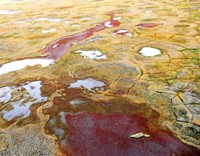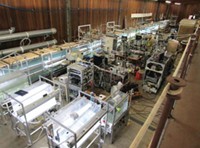Advertisement
Grab your lab coat. Let's get started
Welcome!
Welcome!
Create an account below to get 6 C&EN articles per month, receive newsletters and more - all free.
It seems this is your first time logging in online. Please enter the following information to continue.
As an ACS member you automatically get access to this site. All we need is few more details to create your reading experience.
Not you? Sign in with a different account.
Not you? Sign in with a different account.
ERROR 1
ERROR 1
ERROR 2
ERROR 2
ERROR 2
ERROR 2
ERROR 2
Password and Confirm password must match.
If you have an ACS member number, please enter it here so we can link this account to your membership. (optional)
ERROR 2
ACS values your privacy. By submitting your information, you are gaining access to C&EN and subscribing to our weekly newsletter. We use the information you provide to make your reading experience better, and we will never sell your data to third party members.
Environment
Sulfur Compound Cues Oceanic Snack Time
Dimethylsulfoniopropionate is a beacon for a variety of creatures to congregate at food hot spots
by Sarah Everts
July 19, 2010
| A version of this story appeared in
Volume 88, Issue 29
When phytoplankton release an organosulfur compound called dimethylsulfoniopropionate (DMSP), it’s a beacon for a variety of creatures, including sea urchins, fish, birds, and seals, to come to an oceanic food hot spot to look for a snack. A team of scientists has now resolved a debate about whether marine microbes also find a whiff of DMSP enticing: It turns out, they do (Science 2010, 329, 342). Justin R. Seymour of the University of Technology Sydney, in Australia, and coworkers report that a diversity of bacteria, zooplankton, and other phytoplankton rush toward high concentrations of DMSP and consume it as a source of carbon and reduced sulfur, sometimes producing dimethylsulfide (DMS) as a by-product. In addition to adding clarity to the dynamics of marine food webs, the finding is valuable to climate scientists because cycling of DMSP and DMS is a primary source of sulfur aerosols in Earth’s atmosphere. The aerosols in turn lead to cloud formation and affect global temperatures.




Join the conversation
Contact the reporter
Submit a Letter to the Editor for publication
Engage with us on Twitter